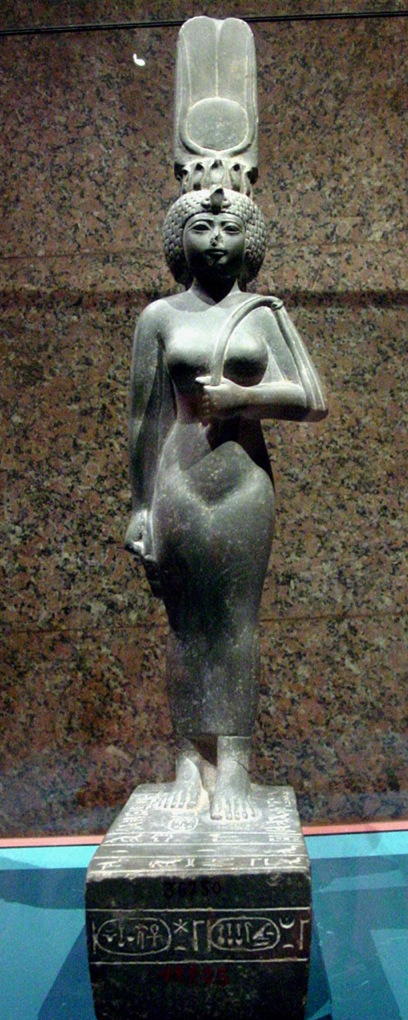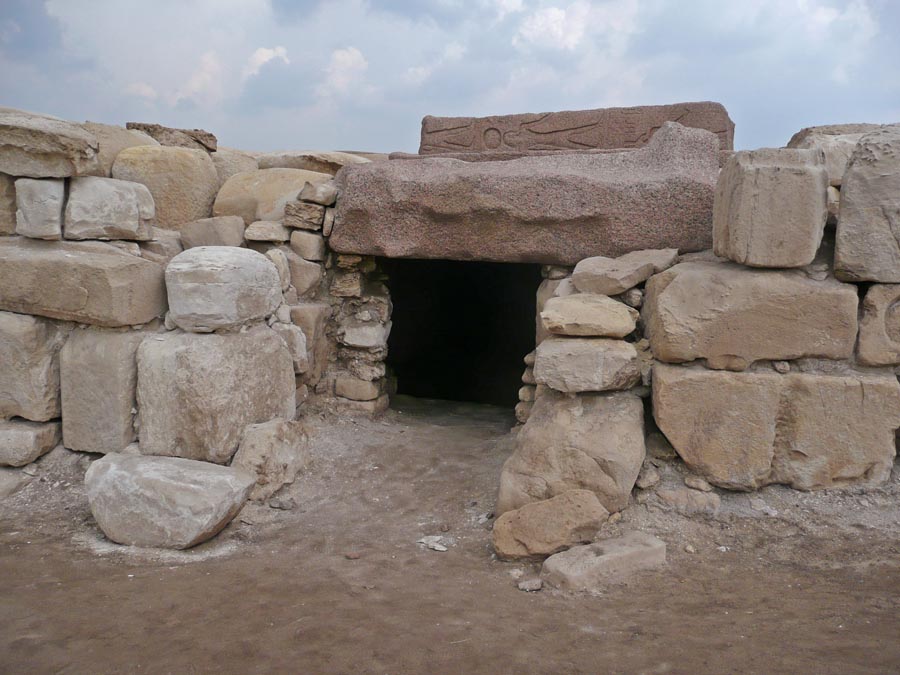|
Karomama II
Karomama II (full name Karomama Meritmut; also known as Karomama D, Merytmut II) was an ancient Egyptian queen, Great Royal Wife of pharaoh Takelot II of the 23rd Dynasty of Egypt. Family Karomama brought various titles such as ''King's Wife, King's Daughter, Mistress of Upper and Lower Egypt''. She was a daughter of the High Priest of Amun Nimlot C and the lady Tentsepeh C. Her paternal grandparents were pharaoh Osorkon II and queen Djedmutesankh. Karomama married pharaoh Takelot II and was mother of pharaoh Osorkon III.Kitchen, The Third Intermediate Period in Egypt (1100–650 BC). 3rd ed. Warminster: Aris & Phillips Limited. 1996 Karomama also was the grandmother of both pharaohs Takelot III and Rudamun and of the God's Wife of Amun Shepenupet IAidan Dodson & Dyan Hilton: ''The Complete Royal Families of Ancient Egypt''. Thames & Hudson, 2004, Karomama is known from the ''Chronicle of Osorkon B'' at Karnak The Karnak Temple Complex, commonly known as Karnak (, whic ... [...More Info...] [...Related Items...] OR: [Wikipedia] [Google] [Baidu] |
23rd Dynasty Of Egypt
The Twenty-third Dynasty of Egypt (notated Dynasty XXIII, alternatively 23rd Dynasty or Dynasty 23) is usually classified as the third dynasty of the ancient Egyptian Third Intermediate Period. This dynasty consisted of a number of Meshwesh kings, who ruled either as pharaohs or as independent kings of parts of Upper Egypt from 880 BC to 720 BC, and pharaohs from 837 BC to 728 BC. History There is much debate surrounding this dynasty, which may have been situated at Herakleopolis Magna, Hermopolis Magna, and Thebes. Monuments from their reign show that they controlled Upper Egypt in parallel with the Twenty-second dynasty, shortly before the death of Osorkon II. While the Twenty-third Dynasty is considered a Tanite dynasty, as it originated from the city Tanis, it never reigned from there. The Twenty-second Dynasty, from Bubastis, took over Tanis and Memphis and managed to retain these cities almost until the end of their Dynasty. As a result, the Twenty-third Dynasty, bei ... [...More Info...] [...Related Items...] OR: [Wikipedia] [Google] [Baidu] |
People Of The Twenty-second Dynasty Of Egypt
A person ( : people) is a being that has certain capacities or attributes such as reason, morality, consciousness or self-consciousness, and being a part of a culturally established form of social relations such as kinship, ownership of property, or legal responsibility. The defining features of personhood and, consequently, what makes a person count as a person, differ widely among cultures and contexts. In addition to the question of personhood, of what makes a being count as a person to begin with, there are further questions about personal identity and self: both about what makes any particular person that particular person instead of another, and about what makes a person at one time the same person as they were or will be at another time despite any intervening changes. The plural form "people" is often used to refer to an entire nation or ethnic group (as in "a people"), and this was the original meaning of the word; it subsequently acquired its use as a plural form of per ... [...More Info...] [...Related Items...] OR: [Wikipedia] [Google] [Baidu] |
Queens Consort Of The Twenty-third Dynasty Of Egypt
Queens is a borough of New York City, coextensive with Queens County, in the U.S. state of New York. Located on Long Island, it is the largest New York City borough by area. It is bordered by the borough of Brooklyn at the western tip of Long Island to its west, and Nassau County to its east. Queens also shares water borders with the boroughs of Manhattan, the Bronx, and Staten Island (via the Rockaways). With a population of 2,405,464 as of the 2020 census, Queens is the second most populous county in the State of New York, behind Kings County (Brooklyn), and is therefore also the second most populous of the five New York City boroughs. If Queens became a city, it would rank as the fifth most-populous in the U.S. after New York City, Los Angeles, Chicago, and Houston. Approximately 47% of the residents of Queens are foreign-born. Queens is the most linguistically diverse place on Earth and is one of the most ethnically diverse counties in the United States. Queens was establ ... [...More Info...] [...Related Items...] OR: [Wikipedia] [Google] [Baidu] |
Nile Quay Texts
The Nile Level Texts (or Nile Quay Texts) are inscribed on the cult terrace (the so-called "quay") at the temple of Karnak, in Thebes, Egypt. This cult terrace itself was constructed during the time of Ramesses II, but the kings of the 22nd to the 26th Dynasties recorded the height of the Nile on its western side. The inscriptions are invaluable records since they are dated to specific years of a certain king's reign. The cult terrace does not bear any inscriptions from the early years of reign of Taharqa, a period that is known from other sources to have been a time of drought. The texts were first examined and recorded by Georges Legrain in 1896, and later recollated by Jürgen von Beckerath in 1953. Many are now damaged or lost through erosion. References * * * *{{cite journal , author=Broekman, Gerardus P. F. , title=The Nile Level Records of the Twenty-second and Twenty-third Dynasties in Karnak: A Reconsideration of Their Chronological Order , journal=Journal of Egyp ... [...More Info...] [...Related Items...] OR: [Wikipedia] [Google] [Baidu] |
Karnak
The Karnak Temple Complex, commonly known as Karnak (, which was originally derived from ar, خورنق ''Khurnaq'' "fortified village"), comprises a vast mix of decayed temples, pylons, chapels, and other buildings near Luxor, Egypt. Construction at the complex began during the reign of Senusret I (reigned 1971–1926 BCE) in the Middle Kingdom (around 2000–1700 BCE) and continued into the Ptolemaic Kingdom (305–30 BCE), although most of the extant buildings date from the New Kingdom. The area around Karnak was the ancient Egyptian ''Ipet-isut'' ("The Most Selected of Places") and the main place of worship of the 18th Dynastic Theban Triad, with the god Amun as its head. It is part of the monumental city of Thebes, and in 1979 it was inscribed on the UNESCO World Heritage List along with the rest of the city. The Karnak complex gives its name to the nearby, and partly surrounded, modern village of El-Karnak, north of Luxor. Overview The complex is a vast open site an ... [...More Info...] [...Related Items...] OR: [Wikipedia] [Google] [Baidu] |
Shepenupet I
Shepenupet I or Shapenewpet I was God's Wife of Amun during the Twenty-third Dynasty of Egypt., p.231 Biography She was the first “hereditary” God's Wife or Divine Adoratrice of Amun to wield political power in ancient Thebes and its surrounding region. She was the first to take on complete royal titulary with names in two cartouches (her prenomen ''Khenemetibamun'' means 'she who is one with the heart of Amun'), and although her successors followed her example, she remained the only one who also bore the royal titles “Lord of the Two Lands” and “Lord of Appearances”, also, the only one whose throne name refers to Amun, not to his wife Mut. She was the daughter of Osorkon III and Queen Karoadjet, and the (half-)sister of Takelot III and Rudamun.Dodson & Hilton, pp.226-227 She was God's Wife during her father's whole reign. When Kashta, a monarch of the 25th Dynasty, extended his influence to the Theban area, she was compelled to adopt Kashta's daughter Amenirdis I as ... [...More Info...] [...Related Items...] OR: [Wikipedia] [Google] [Baidu] |
God's Wife Of Amun
God's Wife of Amun (Egyptian: ''ḥm.t nṯr n ỉmn'') was the highest-ranking priestess of the Amun cult, an important religious institution in ancient Egypt. The cult was centered in Thebes in Upper Egypt during the Twenty-fifth and Twenty-sixth dynasties (circa 740–525 BC). The office had political importance as well as religious, since the two were closely related in ancient Egypt. Although the title is first attested in the Middle Kingdom, its full political potential was not realized until the advent of the Eighteenth Dynasty. History of the office nTr-N41:X1 The shorter version of the title, God's Wife, is in use by the time of the Twelfth Dynasty, when the title is attested for the non-royal women Iy-meret-nebes and Neferu.Mariam F. Ayad (2009), ''God’s Wife, God’s Servant''. As early as the First Intermediate Period, there is mention of A "Wife of the God" in reference to the god Min. The full title of God's Wife of Amun is only used during and after the ... [...More Info...] [...Related Items...] OR: [Wikipedia] [Google] [Baidu] |
Rudamun
Rudamun was the final pharaoh of the Twenty-third Dynasty of Egypt. His titulary simply reads as Usermaatre Setepenamun, Rudamun Meryamun, and excludes the Si-Ese or Netjer-Heqawaset epithets employed by his father and brother. Biography He was the younger son of Osorkon III, and the brother of Takelot III. He is a poorly attested pharaoh of this dynasty according to Kenneth Kitchen, who credits him with a brief reign of about two to three years due to the few contemporary documents known for him. These include a small amount of decorative work done on the Temple of Osiris Heqadjet, several stone blocks from Medinet Habu, and a vase. In recent years, two fragments of a faience statuette bearing Rudamun's name from Hermopolis have been discovered. This recent discovery suggests that Radamun managed to preserve the unity of his father's large kingdom in Upper Egypt ranging from at least Herakleopolis Magna to Thebes during his brief reign. Some Egyptologists such as David Aston ... [...More Info...] [...Related Items...] OR: [Wikipedia] [Google] [Baidu] |
Takelot III
Usermaatre Setepenamun Takelot III Si-Ese (reigned 774–759 BC) was Osorkon III's eldest son and successor. Takelot III ruled the first five years of his reign in a coregency with his father, according to the evidence from Nile Quay Text No.13 (which equates Year 28 of Osorkon III to Year 5 of Takelot III), and succeeded his father as king the following year. He served previously as the High Priest of Amun at Thebes. He was previously thought to have ruled Egypt for only 7 years until his 13th Year was found on a stela from Ahmeida in the Dakhla Oasis in 2005.Frédéric Payraudeau, "Le règne de Takélot III et les débuts de la domination Koushite," GM 198(2004) pp.79-80 Reign length Takelot is attested by several documents: a donation stela from Gurob which calls him "The First Prophet of Amun-Re, General and Commander Takelot," a stone block from Herakleopolis which calls him 'the Chief of Pi-Sekhemkheperre' and king's son by Tentsai, Quay Text No.13, as noted above, and ... [...More Info...] [...Related Items...] OR: [Wikipedia] [Google] [Baidu] |
Osorkon II
Usermaatre Setepenamun Osorkon II was the fifth king of the Twenty-second Dynasty of Ancient Egypt and the son of King Takelot I and Queen Kapes. He ruled Egypt from approximately 872 BC to 837 BC from Tanis, the capital of that dynasty. After succeeding his father, Osorkon II was faced with the competing rule of his cousin, King Harsiese A, who controlled both Thebes and the Western Oasis of Egypt. Potentially, Harsiese's kingship could have posed a serious challenge to the authority of Osorkon, however, when Harsiese died in 860 BC, Osorkon II acted to ensure that no king would replace Harsiese. He appointed his son, Nimlot C, as the high priest of Amun at Thebes, which would have been the source for a successor to Harsiese. This consolidated the king's authority over Upper Egypt and thereafter, Osorkon II ruled over a united Egypt. Osorkon II's reign was a time of prosperity for Egypt and large-scale monumental building ensued. Osorkon II was the last king of the Twenty-sec ... [...More Info...] [...Related Items...] OR: [Wikipedia] [Google] [Baidu] |
_1938.jpg)



